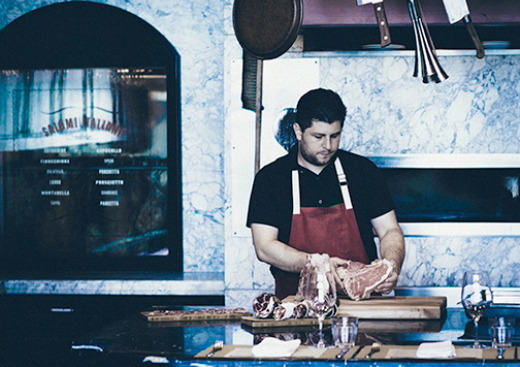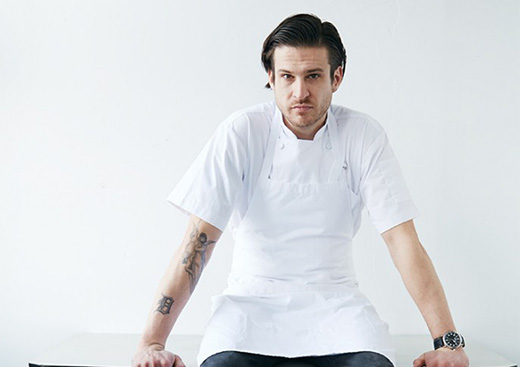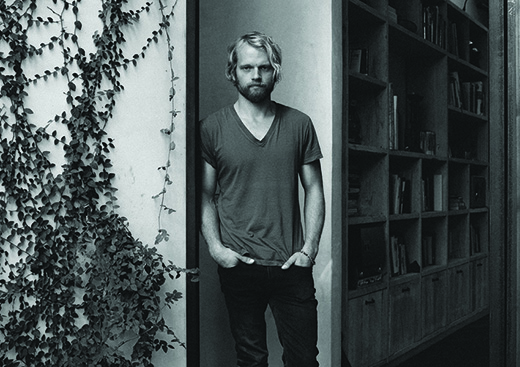The converted loading dock that is Bestia is tucked down 7th Place, a side street that dead-ends at the Los Angeles River. For decades the neighborhood was rather desolate—an industrial extension of nearby skid row that was popular with artists for its cheap raw space—but all that is changing. “Us bringing people here,” explains chef and co-owner Ori Menashe, “I hope opens people’s minds a little.” With no through traffic on the dead-end street, it’s a place you have to find, though it’s become more obvious the crowd of parked cars now marks Bestia, which for two years has been one of Los Angeles’ most sought-after Italian- restaurant reservations.
Menashe was born in Los Angeles, moved to Israel at age 7 and returned after his compulsory military service in 2001. He’s now a 10-year restaurant veteran as well, including a stint as chef at Osteria Angelini. Bestia is the first restaurant he can call his own (he’s opening a Middle Eastern concept restaurant nearby in the future), so he created the kind of place he’s always wanted. He started with an open kitchen plan, something he’d never had before. “I wanted to feel the vibe from the dining room,” he explains while walking through the various kitchen stations, each buzzing with activity at 3 p.m. as the morning and evening shifts change over. I lost count of staff past 50, but Menashe puts the total at a bit over a hundred, with around 75 employees working each day, including the dozens of prep cooks I am watching. “There is so much in the preparation,” Menashe continues, “and that’s why we’re not open for lunch, because our processes are so exhausting. We overstaff, because I want everything to be perfect.”
Menashe quickly reads my wandering eyes, reaches into the glassed-in temperature- and humidity-controlled charcuterie case and slices off a piece of a three-month-aged pepper salami, perfectly tangy and sweet. Menashe has been working on charcuterie for six years, starting with stages at butcher shops and honing his skills at Napa Valley charcuterie shop The Fatted Calf. “When I was staging there, I was butchering as fast as I could, so I would have time to force them to teach me how to make the cured meats. If you didn’t have time, they wouldn’t let you do it. Consistency was really what I learned there. How to make an environment that’s controlled—humidity, temperature. How you make quicker and slower fermentation.” He’s done well.
—





